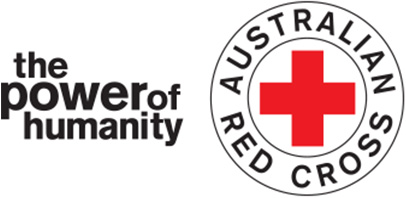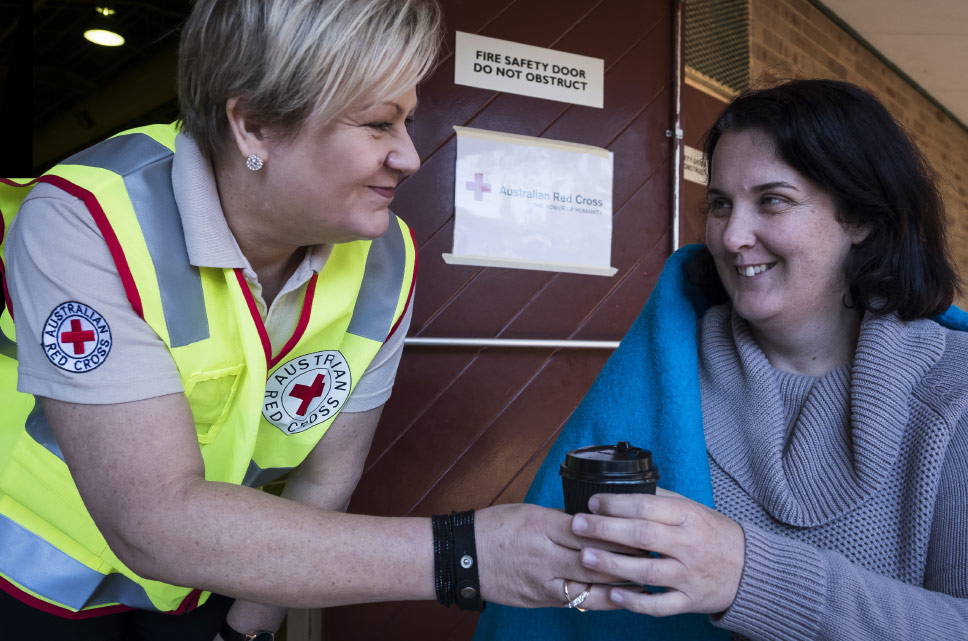
A hot drink, a warm blanket and an understanding Red Cross volunteer make the transition to an Evacuation Centre easier for residents.
Australian Red Cross/Conor Ashleigh




These outcomes are about increasing the resilience of Australian communities to support more effective recovery – at scale. This includes not only being there to walk alongside communities in times of shock, but also working with the sector partners to direct national resources to the right places to reduce disaster risk and strengthen community resilience. To achieve real impact at scale, we need to re-think our traditional approaches and work with a range of new and existing partners.
We took some great initial steps towards this in 2016/17.
Our work in Australia
Red Cross was activated for 15 emergencies across four states and territories by October, before the traditional emergency season had even begun.
Our teams supported shocked and grieving community members after the Dreamworld tragedy on the Gold Coast, the violence in Bourke Street Mall in Melbourne and Cyclone Debbie in Queensland and northern New South Wales.
Within three months of Cyclone Debbie’s landfall, we helped almost 27,000 people in affected towns, with practical and financial assistance, psychological first aid, information, referrals or a listening ear.
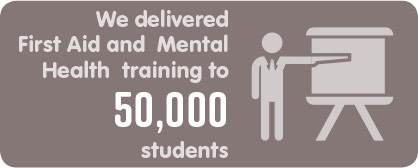
Ready for the worst
To help people prepare for disaster and everyday emergencies, we promoted RediPlan, a four-step checklist. Our Disaster Preparedness Week in September saw a significant increase in the number of people downloading and filling in RediPlan and in excess of 11,500 people visiting our website.
It has been difficult for us to measure who has taken action even though they have downloaded a plan so we are working on ways to engage communities and support people to help each other.
Our resilience-building Pillowcase program, aimed at children in years 3 and 4, grew considerably from 3,000 students last year to nearly 10,000 children this year.Students are invited to pack a pillowcase that becomes their own personal emergency kit; learning not only how to prepare but to understand their own thought processes in an emergency.
Partners such as Motorola Solutions Foundation and Land Rover Australia helped our resources to reach more Australians with diverse needs. We entered a significant 10-year partnership with Insurance Australia Group Limited (IAG) and, with them, we are co-designing a digital tool with the community to help people prepare for emergencies.
We signed an agreement with the Northern Territory Government to manage its evacuation centres during the next three years. We also signed a three-year agreement with the South Australian Government to extend our Telecross service to support vulnerable people across the state during heatwaves.
Being separated from loved ones during emergencies can be traumatic. Use Register.Find.Reunite.
Emergency research
We partnered with the University of Melbourne to investigate the health impacts of the 2009 Black Saturday Bushfires. In a world first, the study empirically demonstrated that separation from family during an emergency can lead to significant long-term mental health issues.
We also joined international experts to pilot a psycho-social intervention program for people recovering after disasters in South Australia. Both studies will inform our psycho-social support and family reconnection services.
We will also be engaging with all levels of government to build a strong support base for increased investment. We will be developing further research to demonstrate the benefits of making greater investments in infrastructure, regional and remote employment, community cohesion and economic development.
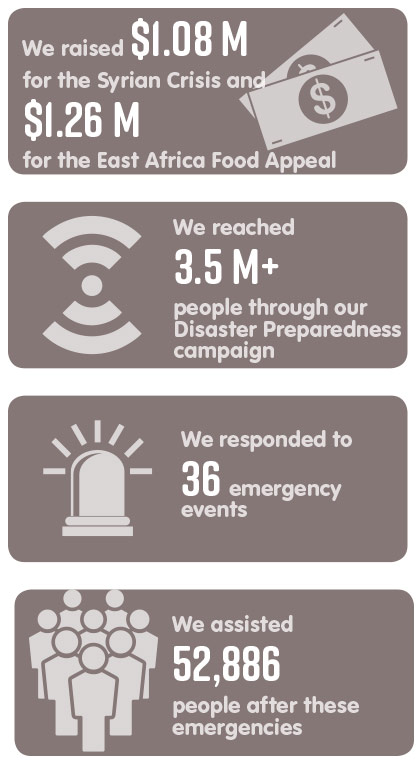
Our work overseas
In the Asia-Pacific, we supported Red Cross partners to respond to tropical cyclones (Donna and Haima); earthquakes (New Zealand and Solomon Islands); dengue outbreaks in Vanuatu; drought in the Marshall Islands and dzud, the harsh winter in Mongolia.
We implemented a new monitoring, evaluation, reporting and learning framework to help us understand the overall impact of our projects. We conducted evaluations throughout the Asia/Pacific development work as well as reviewed disaster and crisis response. For example, in the Philippines an evaluation of the Typhoon Haiyan Recovery Program was conducted in February, called Thinking Back, Looking Ahead which provided insights and ideas as to how future recovery operations can be improved further. In April, Australian Red Cross supported an evaluation of the Kiribati Red Cross Society’s (KRCS) Community Based Health Program WASH project which found that the achievements of the KRCS in delivering this project were substantial and that the model and approach should be continued.
The Timor Leste evaluation analysed food security and livelihoods in communities of Timor Leste to identify interventions strengthening resilience in relation to household economies and hazards.
Our reviews also included a meta-analysis of four emergency responses: Typhoon Haiyan, Tropical Cyclone Pam, Nepal Earthquake and Tropical Cyclone Winston in July 2016 with all of the recommendations compared and contrasted to identify common themes and areas for improvement and/or change. We had the opportunity to review the New Zealand Earthquake Response and worked through a framework for rapid deployment for staff on loan.
Our Syria Crisis Appeal and East Africa Food Crisis Appeal helped get drinking water, hygiene items, essential health care and cash to people struggling to survive two of the largest humanitarian crises since World War II.
Our partnership with the Department of Foreign Affairs and Trade (DFAT) continues to better prepare local partners and communities to reduce and mitigate risks around disasters, foster disaster risk reduction in the Asia-Pacific region as well as strengthen local humanitarian agencies; improve health indicators, including water, sanitation and hygiene; and encourage innovation in international aid.
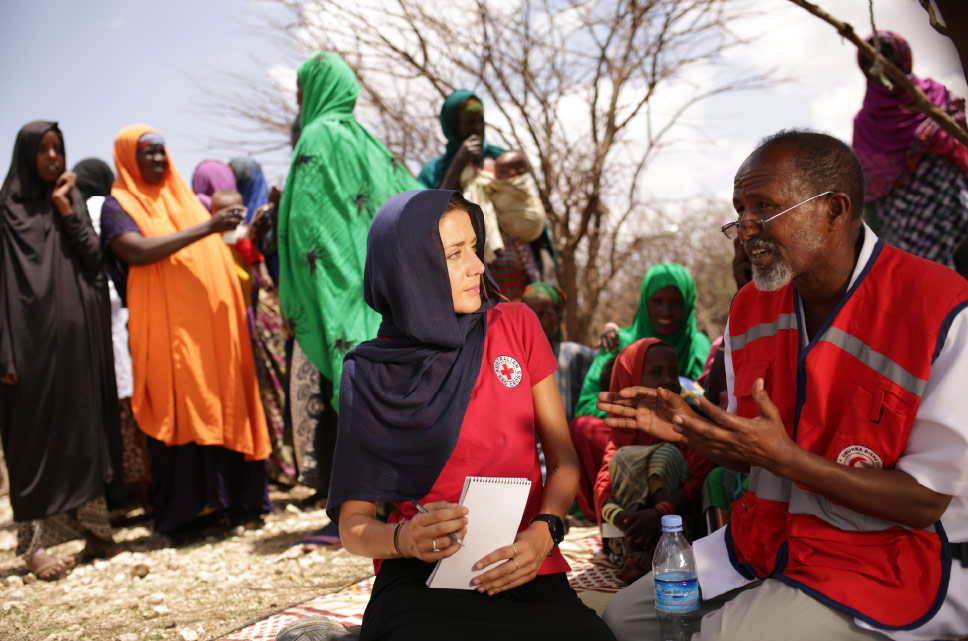
Australian Red Cross aid worker Jess Lees in Somaliland. Australian Red Cross/Peter Caton
More intelligent aid
The humanitarian sector is at a tipping point: to meet the scale of the crises we face today, and anticipate in the future, aid has to be faster, more effective, and, above all, more localised.
For us, this means rethinking aid. We are working with DFAT and our Pacific partners on a range of initiatives; including a digital procurement system that enables local businesses in Vanuatu to supply, store and transport all the supplies their communities need.
We are also using seasonal forecasts to finance early action before disasters strike, deploying drones to speed up post-disaster assessments and strengthening disaster laws to make aid go further and faster.
